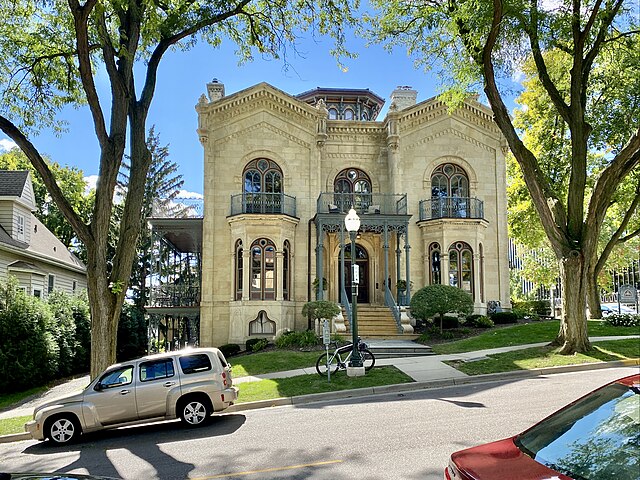Romanesque Revival architecture
Romanesque Revival is a style of building employed beginning in the mid-19th century inspired by the 11th- and 12th-century Romanesque architecture. Unlike the historic Romanesque style, Romanesque Revival buildings tended to feature more simplified arches and windows than their historic counterparts.
The Smithsonian Institution Building, an early example of American Romanesque Revival designed by James Renwick Jr. in 1855
Culzean Castle by Robert Adam, 1771
Gosford Castle, Armagh by Thomas Hopper
Penrhyn Castle, by Thomas Hopper, 1820–1837
Rundbogenstil is a nineteenth-century historic revival style of architecture popular in the German-speaking lands and the German diaspora. It combines elements of Byzantine, Romanesque, and Renaissance architecture with particular stylistic motifs. It forms a German branch of Romanesque Revival architecture sometimes used in other countries.
Entrance to the main building of Karlsruhe Polytechnic (Heinrich Hübsch, 1833–35)
West facade of the Speyer Cathedral, rebuilt 1854–58 by Heinrich Hübsch
Carrie Pierce House in Madison, Wisconsin (August Kutzbock and Samuel Donnel, 1857)
Van Slyke / Keenan House in Madison, Wisconsin (August Kutzbock, 1858)








